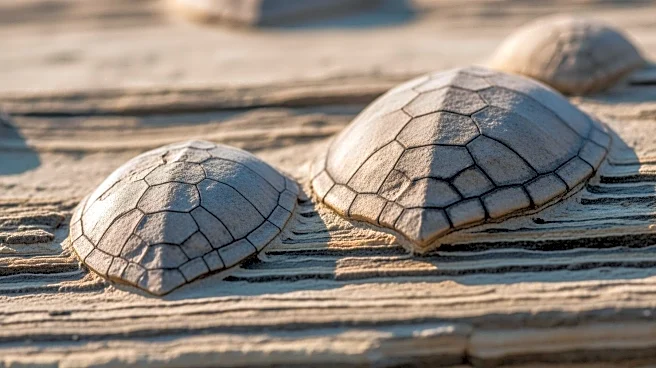What's Happening?
A geological study has uncovered strange impressions on a rock face in Italy, believed to be left by a stampede of sea turtles disturbed by an earthquake approximately 83 million years ago. The discovery
was made by free climbers on the slopes of Monte Cònero, Italy's east coast, in an area off-limits to the public. The impressions, numbering over 1000, are located in two sites, one above the ocean and another on a fallen shelf at La Vela beach. The limestone rocks formed from sediment on a shallow seabed during the Cretaceous period. Scientists, led by Alessandro Montanari from the Geological Observatory of Coldigioco, hypothesize that the markings were made by sea turtles, as other marine vertebrates like fish, plesiosaurs, and mosasaurs were ruled out. The team suggests that the prints were preserved due to rapid burial by sediment during an earthquake.
Why It's Important?
This discovery provides valuable insights into the behavior and environmental conditions of ancient marine life during the Cretaceous period. If confirmed, the findings could represent the most numerous sea turtle traces globally, offering a unique glimpse into prehistoric marine ecosystems. The study highlights the dynamic nature of ancient seafloors and the potential for natural disasters like earthquakes to impact marine life significantly. Understanding these ancient events can inform current geological and environmental studies, potentially aiding in predicting and mitigating the effects of similar occurrences today.
What's Next?
The research team plans to involve ichnologists, specialists in trace fossils, to further analyze the markings and confirm their origin. This collaboration could lead to more detailed insights into the behavior and movement patterns of ancient sea turtles. The findings may also prompt further exploration of similar sites globally, expanding the understanding of marine life during the Cretaceous period. Continued research could refine the methods used to study trace fossils, enhancing the accuracy of historical ecological reconstructions.
















